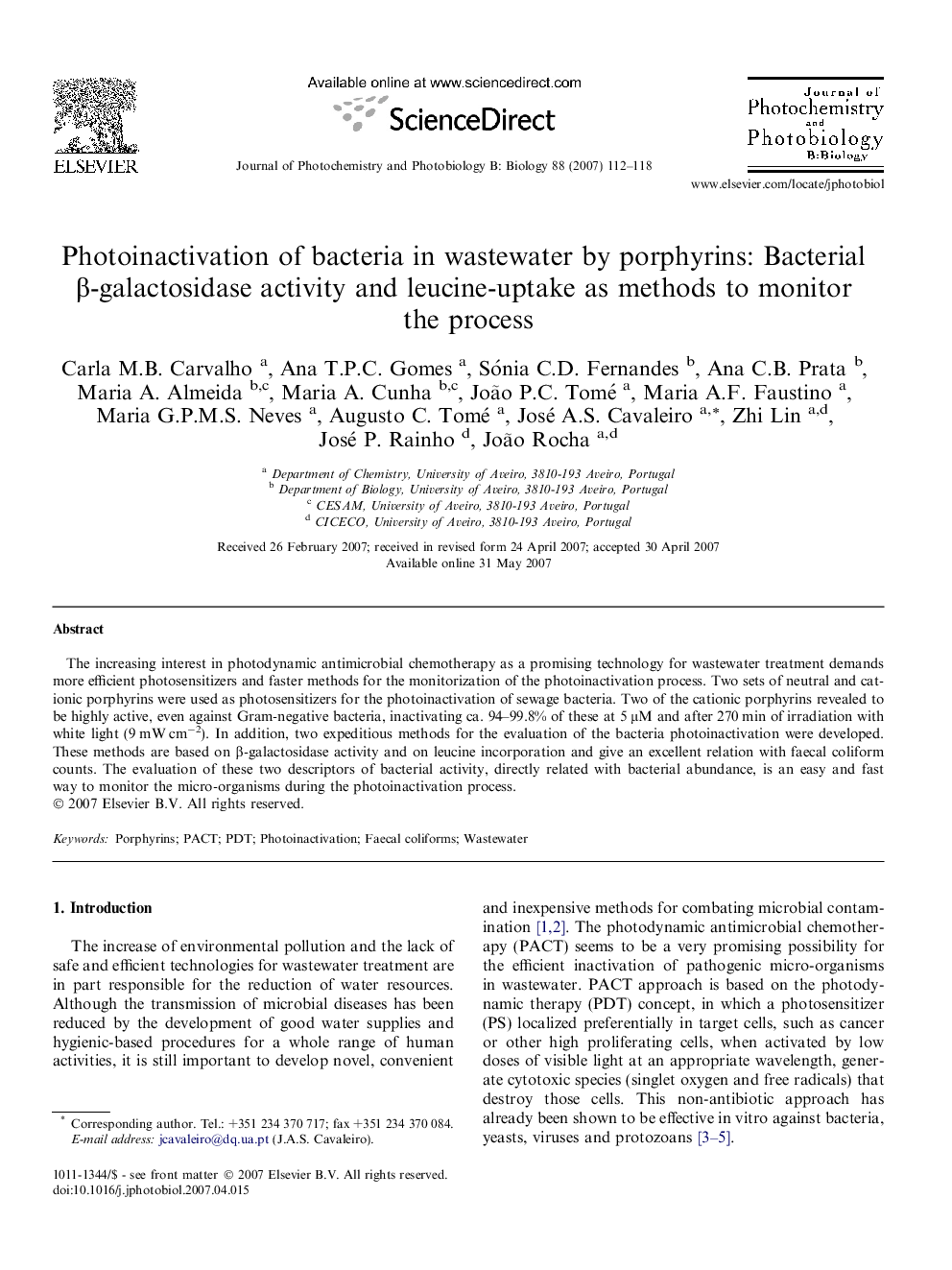| Article ID | Journal | Published Year | Pages | File Type |
|---|---|---|---|---|
| 30977 | Journal of Photochemistry and Photobiology B: Biology | 2007 | 7 Pages |
The increasing interest in photodynamic antimicrobial chemotherapy as a promising technology for wastewater treatment demands more efficient photosensitizers and faster methods for the monitorization of the photoinactivation process. Two sets of neutral and cationic porphyrins were used as photosensitizers for the photoinactivation of sewage bacteria. Two of the cationic porphyrins revealed to be highly active, even against Gram-negative bacteria, inactivating ca. 94–99.8% of these at 5 μM and after 270 min of irradiation with white light (9 mW cm−2). In addition, two expeditious methods for the evaluation of the bacteria photoinactivation were developed. These methods are based on β-galactosidase activity and on leucine incorporation and give an excellent relation with faecal coliform counts. The evaluation of these two descriptors of bacterial activity, directly related with bacterial abundance, is an easy and fast way to monitor the micro-organisms during the photoinactivation process.
